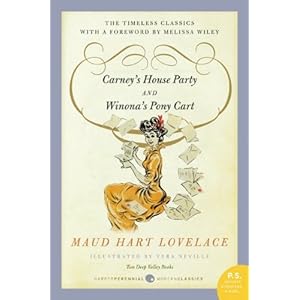The Christmas Pony by Helen McCully and Dorothy Crayder, illustrated by Robert J. Lee. Bobbs-Merrill, 1967. (Christmas in Nova Scotia, Canada, 1912)
Catching the apple, Helen had been tempted to smile, but since the best way to enjoy the marsh was to be unhappy, she was determined to remain so.
The McCullys and the cats coexisted with the understanding that people were people and cats were cats and it was neither possible nor desirable for it to be otherwise. This understanding made for mutual enjoyment.
Mrs. McCully did not believe in her children’s being sick and consequently they very rarely were. And when they were, they were never allowed to be very sick. Being sick was for people who had nothing better to do.
Every year, two days before Christmas the doors to the Big Rooms and the dining room were closed tight and were not to be opened until Christmas morning. To the children, it was always as if a stage were being set behind those closed doors and when at last they were opened, the play would begin.
The children now began a two-day siege compounded of excitement, fidgets, and the need to be on their best behavior or Santa Claus might have some second thoughts. Deep down in their hearts, the children believed that Santa Claus was a loyal, generous friend who accepted the good with the bad, but they were leery of making a test case of it.

Helen McCully, one of the authors of this brief Christmas novelette (101 pages), is also one of the three children who celebrate a Christmas to remember in this story set in Amherst, Nova Scotia, Canada. The tone and writing of the story, which is sampled in the quotes above, reminded me of old-fashioned magazine story writing from the 1950’s and 60’s, and indeed Ms. McCully and Ms. Crayder both had experience writing for women’s magazines as well as radio plays and television. The Christmas Pony tells about Helen, her brother Robert, and her little sister Nora and the surprise gift that they received one Christmas.
This book would make a wonderful read aloud story sometime during the Christmas season, but there is a rather big risk. The book begins with the statement, “Every child should have a pony.” If you think you can read the story and remain indifferent to the desire for a real, live pony of your own, or if you think your children can contain themselves, then this book is a delight.







